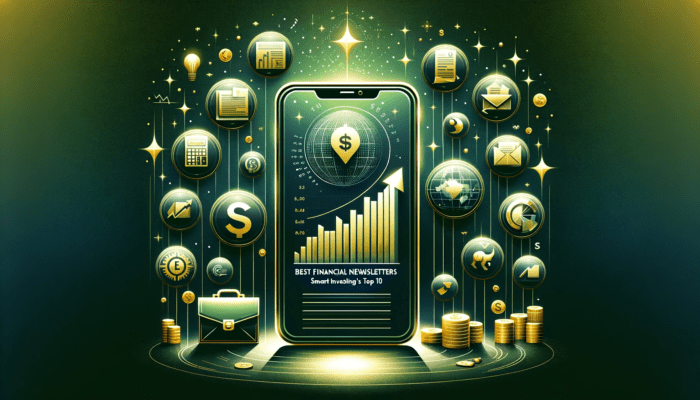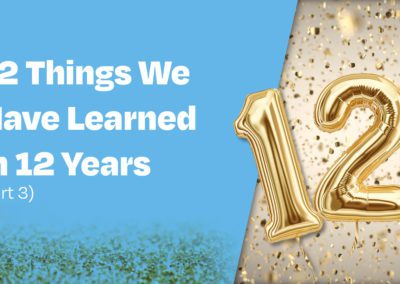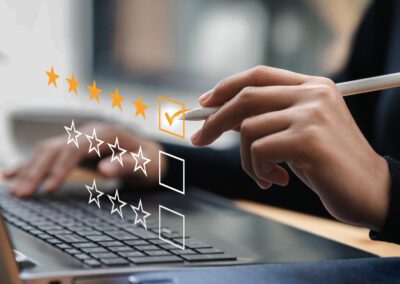In today’s competitive marketplace, knowing your customer is more crucial than ever. One of the most important metrics that businesses should focus on is Customer Lifetime Value (CLV). This metric goes beyond just understanding the immediate value a customer brings; it encompasses the total net profit a company expects to earn from a customer over the course of their business relationship. In this article, we will delve into the foundation and importance of Customer Lifetime Value, how to calculate it, and strategies to increase it.
What is Customer Lifetime Value?
Customer Lifetime Value (CLV) is a prediction of the net profit attributed to the entire future relationship with a customer. This metric helps businesses understand how much revenue they can expect from a customer and make informed decisions about marketing, sales, and customer service investments.
The Concept of CLV
Customer Lifetime Value is not just a number; it’s a comprehensive metric that reflects the total revenue a customer will generate over their lifetime with your company. This value helps businesses understand the long-term impact of their customer relationships. By focusing on CLV, companies can shift their mindset from short-term gains to long-term profitability.
Historical Perspective
The concept of CLV has evolved over time. Initially, businesses focused on immediate sales and short-term profits. However, with the advent of data analytics and customer relationship management (CRM) systems, companies now have the tools to track and predict customer behavior over extended periods. Understanding this historical evolution can provide insights into how businesses can leverage modern tools to optimize CLV.

CLV vs. Other Metrics
While CLV is an essential metric, it should be considered alongside other key performance indicators (KPIs) such as customer acquisition cost (CAC), churn rate, and customer satisfaction scores. Each of these metrics provides a piece of the puzzle in understanding the overall health of a business. Comparing CLV with these metrics can offer a more holistic view of your company’s performance.
Why is CLV Important?
Understanding CLV is crucial for several reasons:
Resource Allocation
Helps in allocating resources more efficiently by identifying high-value customers. When you know which customers bring the most value, you can focus your marketing and customer service efforts on retaining and nurturing these relationships. This targeted approach ensures that your resources are used effectively, maximizing ROI.
Customer Retention
Provides insights on how to retain customers and improve their lifetime value. By understanding the factors that contribute to a high CLV, businesses can develop strategies to enhance customer satisfaction and loyalty. Retaining customers is often more cost-effective than acquiring new ones, making this insight invaluable.
Marketing ROI
Allows businesses to calculate the return on investment for customer acquisition efforts. Knowing your CLV helps you determine how much you can afford to spend on acquiring a new customer. This calculation ensures that your marketing campaigns are not only effective but also profitable.
Business Strategy
Assists in crafting long-term strategies that focus on customer loyalty and retention. High CLV indicates strong customer relationships, which are the foundation of sustainable business growth. By focusing on increasing CLV, companies can develop long-term strategies that prioritize customer satisfaction and loyalty.
How to Calculate Customer Lifetime Value
Calculating CLV can be complex, but it is essential for making informed business decisions. The formula can vary depending on the business model, but a common approach involves the following steps:
Basic CLV Formula
The simplest way to calculate CLV is:
[ \text{CLV} = \text{Average Purchase Value} \times \text{Purchase Frequency} \times \text{Customer Lifespan} ]
- Average Purchase Value: Calculate by dividing the total revenue by the number of purchases over a specific period. This metric gives you an idea of how much a customer spends on average each time they make a purchase.
- Purchase Frequency: Determine by dividing the number of purchases by the number of customers over the same period. This metric indicates how often customers make purchases.
- Customer Lifespan: Estimate how long a customer will continue to purchase from the business. This metric helps predict the duration of the customer relationship.
Advanced CLV Formula
For a more detailed calculation, consider including the gross margin and discount rate:
[ \text{CLV} = \left( \frac{\text{Average Purchase Value} \times \text{Purchase Frequency}}{\text{Churn Rate}} \right) \times \text{Gross Margin} \times \left( \frac{1}{1 + \text{Discount Rate}} \right) ]
- Churn Rate: The percentage of customers who stop purchasing over a given time period. A lower churn rate indicates higher customer retention.
- Gross Margin: The difference between revenue and cost of goods sold. This metric provides insight into the profitability of each sale.
- Discount Rate: The interest rate used to discount future cash flows to their present value. This rate accounts for the time value of money, making future revenues comparable to current revenues.
Practical Examples
To better understand these formulas, consider practical examples from different industries. For instance, an e-commerce company might calculate CLV differently than a subscription service due to variations in purchase frequency and customer lifespan. Analyzing these examples can provide a clearer understanding of how to apply these formulas to your specific business model.
Average Customer Lifetime Value by Industry
The average CLV varies significantly by industry. Here are a few examples:
Retail
Typically lower CLV due to high competition and frequent customer churn. Retail businesses often rely on high volume sales and quick turnover to maintain profitability. Understanding the challenges in this industry can help businesses develop strategies to improve customer retention and increase CLV.
Subscription Services
Higher CLV because of recurring revenue and long-term customer relationships. Subscription services benefit from consistent, predictable revenue streams. Strategies to increase CLV in this industry often focus on reducing churn and enhancing the customer experience.
B2B Services
Generally high CLV due to large transaction sizes and long-term contracts. B2B services often involve complex sales cycles and significant investments in customer relationships. Understanding the nuances of this industry can help businesses tailor their strategies to maximize CLV.
E-commerce
Varies widely depending on the niche and customer retention strategies. E-commerce businesses can have vastly different CLVs based on their product offerings and customer engagement efforts. Analyzing the factors that contribute to high CLV in successful e-commerce companies can provide valuable insights.

How to Increase Customer Lifetime Value
Increasing CLV requires a strategic approach that focuses on customer satisfaction, retention, and loyalty. Here are some effective strategies:
Improve Customer Experience
Investing in customer experience can significantly impact CLV. This involves:
- Personalized Interactions: Use customer data to tailor interactions and offers. Personalized experiences make customers feel valued and understood, increasing their loyalty.
- Responsive Customer Support: Ensure quick and effective resolution of customer issues. Excellent customer support can turn a negative experience into a positive one, boosting customer satisfaction.
- User-friendly Interfaces: Optimize your website and app for easy navigation and seamless transactions. A smooth user experience encourages repeat purchases and enhances customer loyalty.
Implement Loyalty Programs
Loyalty programs can incentivize repeat purchases and increase customer loyalty. Consider:
- Points-based Systems: Reward customers with points for every purchase, which can be redeemed for discounts or freebies. This system encourages repeat purchases and fosters customer loyalty.
- Tiered Programs: Offer different levels of rewards based on customer spending or engagement. Tiered programs create a sense of exclusivity and motivate customers to increase their spending to reach higher reward levels.
- Exclusive Offers: Provide special deals and early access to new products for loyal customers. Exclusive offers make customers feel valued and appreciated, enhancing their loyalty.
Upsell and Cross-sell
Encouraging customers to purchase additional or higher-end products can boost their lifetime value. Effective upselling and cross-selling strategies include:
- Product Recommendations: Use data analytics to suggest relevant products. Personalized product recommendations can increase the likelihood of additional purchases.
- Bundling: Offer product bundles at a discounted price. Bundling encourages customers to purchase more items at once, increasing the average purchase value.
- Follow-up Emails: Send personalized emails with product suggestions based on previous purchases. Follow-up emails keep customers engaged and encourage repeat purchases.
Enhance Customer Retention
Retaining existing customers is often more cost-effective than acquiring new ones. Focus on:
- Customer Feedback: Regularly collect and act on customer feedback to improve your offerings. Listening to customers and making improvements based on their feedback shows that you value their opinions.
- Consistent Communication: Maintain regular contact through newsletters, social media, and personalized emails. Consistent communication keeps your brand top-of-mind and fosters a sense of connection with your customers.
- After-sales Support: Provide excellent after-sales support to ensure customer satisfaction and loyalty. High-quality after-sales support can turn one-time buyers into loyal, repeat customers.
Real-world Examples of High CLV Companies
Several companies have successfully implemented strategies to increase their CLV. For instance:
Amazon
Uses data analytics to personalize shopping experiences and recommend products. Amazon’s recommendation engine suggests products based on customer browsing and purchase history, increasing the likelihood of additional purchases. The company also offers exceptional customer service, enhancing customer satisfaction and loyalty.
Apple
Focuses on high-quality products and exceptional customer service to retain customers. Apple’s ecosystem of products and services encourages customers to stay within the brand, increasing their lifetime value. The company’s commitment to innovation and customer satisfaction has resulted in a loyal customer base.
Netflix
Implements a subscription model with personalized content recommendations to keep users engaged. Netflix uses data analytics to understand user preferences and deliver tailored content, enhancing the viewing experience. The company’s focus on customer satisfaction and engagement has resulted in high CLV.
Conclusion
Customer Lifetime Value is a vital metric for any business aiming for long-term success. Understanding and leveraging CLV can help you allocate resources efficiently, improve customer retention, and maximize your marketing ROI. By implementing strategies to increase CLV, you can create more loyal customers and drive sustainable growth for your business.
In summary, knowing your CLV and working towards enhancing it can provide a significant competitive edge in today’s market. Start by calculating your CLV, compare it with industry benchmarks, and implement strategies tailored to your business needs to see tangible results.
Get Started with Newsletter Pro
Are you ready to enhance your customer engagement and boost your Customer Lifetime Value? Let Newsletter Pro help you achieve your business goals with tailored email marketing strategies that connect directly with your audience. Our experienced team is here to provide you with personalized support and insightful analysis to elevate your marketing efforts. Contact us today to learn how we can assist you in growing your customer base and increasing lifetime value through effective communication!






